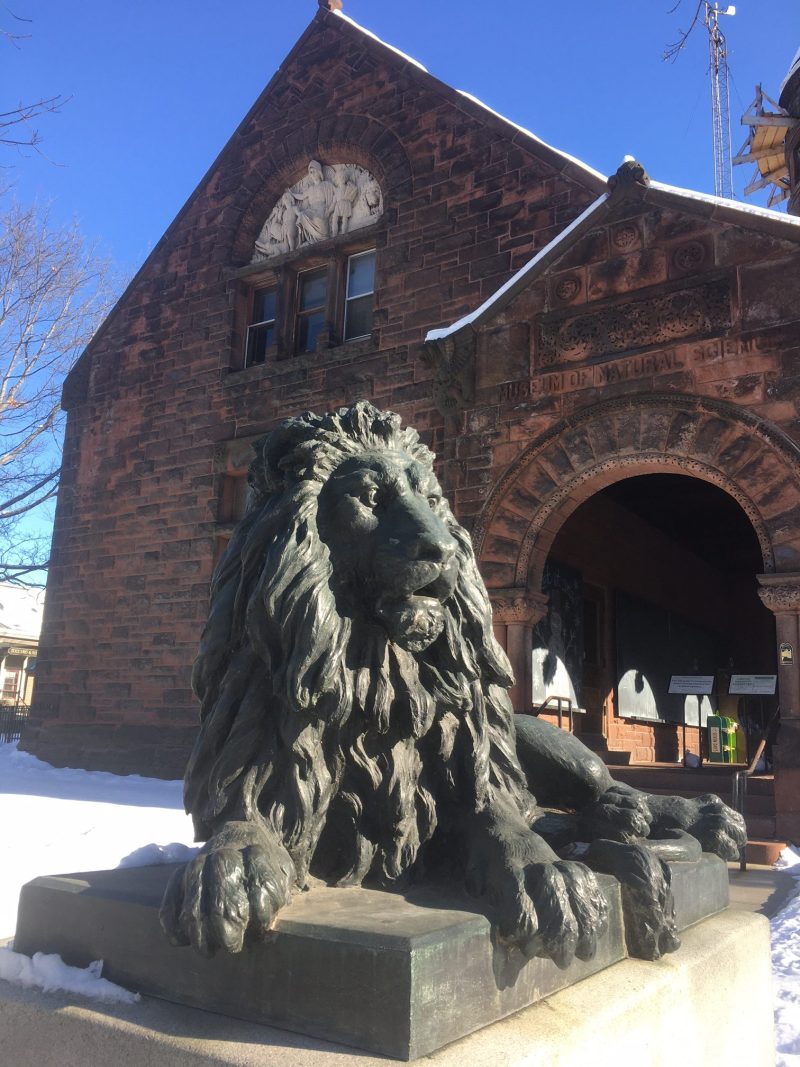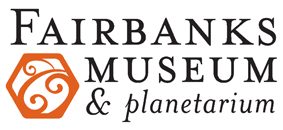
2023 Impact Report: Leap of Faith
The past year has revealed our strengths and confirmed our direction. We’re committed to prioritizing our mission and holding true to the vision of our founder, even when circumstances test our resolve. Through it all, we’ve gained new friends and deepened our connections with members and supporters – you are the foundation of this institution.
When we broke ground for our Tang Science Annex in 2022, we couldn’t imagine the long journey of completing this dream. We learned to embrace the process in 2023 and found ways to grow. We’re starting 2024 with fresh enthusiasm, as this monumental project delivers a dynamic new space and our pristine Matsinger Forest gets ready for new generations of explorers. The year was defined by perseverance and humor, taking us in some new directions.
The through-lines of 2023 are a testament to the timelessness of the Fairbanks Museum & Planetarium. This institution has weathered upheaval and remained steadfast in its ability to serve as an educational resource, cultural touch-point, and beloved attraction. Our programs and exhibits are designed to spark curiosity, inspire wonder, and provoke contemplation about the natural world – those guideposts remain the core of everything we do.
What changes is the way we do things. Parts of our natural history collections – especially the full-habitat dioramas created by taxidermist William Balch during the Museum’s early days – are as relevant today as they were when they were first installed. What changes are the ways we interpret our displays and our approaches to reaching more students, families, seniors, neighbors, and friends. 2023 helped us focus on engaging with you in new and sometimes unexpected ways.
We do what we do because of you. As this Museum grows and addresses current issues, we continue to listen to your questions and learn from your concerns. Our aim is to offer a space for you to explore, connect, and discover … to provide some ways to understand changes in our natural world.
Paige Crosby, Chair, Board of Trustees
Adam Kane, Executive Director
How did we do?
Here are a few of the ways we measured success in 2023:
43 toddlers from 35 families came together for weekly Nature Buddies playgroups in every season.
11 different butterflies and 4 moth species our seasonal Shippee Family Eye Care Butterfly House.
12 kids celebrated their birthdays with a party and private planetarium show.
89 schools and community organizations explored science topics with Museum educators.
11,254 visitors toured the cosmos or traveled through time in our Lyman Spizter Jr. Planetarium.
110 students from 65 families took part in Home School Tuesdays.
547 new members and donors made their first contribution to the Museum.
151 campers had a blast during vacation weeks and summer Discovery Camps.
24 business sponsors invested in our community.
400+ people came to the St. Johnsbury School for a William Eddy Lecture presentation by author Suzanne Simard.
18 nearby villages and town where residents can visit the Museum at no charge because the community approved support through a municipal appropriation.
43 states and 14 countries: places where visitors who signed our guest book live.
While we look for new ways to reach wider audiences, your involvement is what counts.
1,123 of you were members in 2023. You’re the reason we do what we do.
Taking Chances
It takes courage to upend an established way of thinking. That’s exactly what Denis Diderot did when he published 35 volumes that challenged 18th century norms. His Encyclopedie ou Dictionnaire raisonne des science, des arts, et des métiers – known as Diderot’s Encyclopedia – was a comprehensive effort to research and record human knowledge. The collection described objects and ideas with the goal “to change the way people think.” We opened 2023 with a new display celebrating a gift from Christine Hadsel of Burlington, VT, of a near complete original set of Diderot’s Encyclopedia. Throughout the year, this display is refreshed to feature items in our collections that enhance the original essay with contemporary reflections.
From a revolution of thought, we turned some of our collections on end to discover new ways to connect. Zach Umperovitch is the leading authority on building machines inspired by Rube Goldberg designs. He creates complex machines that fulfill a simple task with many steps, along with a healthy dose of humor. Zach constructed a massive contraption that set off a chain reaction along the length of our main gallery, up to the balcony, down the stairs, then back to the starting point. His machine included countless items that had been tucked away for decades, such as a sand pendulum and croquet balls from our Hall of Science, a skeleton, and taxidermy mounts from our educational collections. The resulting contraption brought whimsy to the main gallery when Umperovitch set it in motion after delivering a William Eddy lecture.
Stepping out of our comfort zone led the Museum to partner with the Vermont Land Trust to create the Fairbanks Museum Nature Preserve at Matsinger Forest in Danville, Vermont. The 500+ acre parcel was given to the Fairbanks Museum by John and Barbara Matsinger to fulfil their vision for forest stewardship, environmental education, and community access to the natural world. The Museum will use Matsinger Forest for educational programs starting in the summer of 2024. This wide-open expanse invited a new partnership with St. Johnsbury Academy, where students in the woodworking class are building bridges.
The open expanse of Matsinger Forest welcomed author Suzanne Simard, our William Eddy Lecture speaker in November. Simard’s book, Finding the Mother Tree, challenges accepted ideas with a radical notion that trees communicate through underground connective networks. Her research reveals evidence of communities within forests, nurturing new growth and fostering diversity. Her findings encourage a fresh approach to land management and conservation.
And in the background of all this, the din of excavators and circular saws was rarely absent. We held our breath as a project decades in the making, the construction of the Tang Science Annex, took shape piece by piece. The tumult was at times staggering as scaffolding appeared and reappeared on all sides of the museum for an extensive masonry and roof restoration of our beloved historic building. There were a few setbacks and leaps of faith to be sure, but we never wavered from the dream of preserving our historic legacy while moving with purpose into the future. The Tang Science Annex and accompanying restoration project makes us even more determined and capable of inspiring wonder and curiosity about the natural world.
